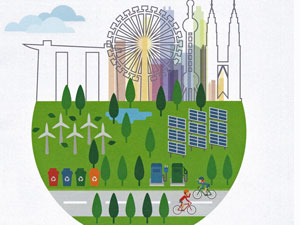
For the last decade we have all been made aware that Earth needs protection. Yet, the ugly truth is sustainability schemes have failed in many countries, and our environment continues to decay.
As the Earth’s driest inhabited continent, resources reaching scarcity in Australia have already hit many regions, including chronic water shortages.
If we narrow down our focus to regular cleaning practices and how far have progressed in terms of supporting sustainability, the majority of the population has failed to realise the quintessential green cleaning principles.
It is not only about removing chemicals, but also to conserve our scarce resources. First and foremost, energy and water.
Awareness
We don’t have an endless supply of water, that is the unshaken reality, and we all need to play our part in conserving it.
We should have started saving water a long time ago and it is not even as hard as it seems. Pay enough attention to the amount of water used in cleaning systems and equipment, and find the best way to save it.
Every organisation should apply regular on-site examination to see if any water taps needs repair.
However, raising awareness of water leakage is not only about pinpointing any possible leakage. It is also means ensuring taps are not used too often, too much or too continuously.
Critical attention should also be paid to toilet and bathroom facilities, and avoid flushing toilets too many times while cleaning. Another possible solution to reducing water usage is to install a water displacement device.
Water saving equipment
Equipment plays a key part in our water-saving effort. As mentioned in my article in the previous edition, the industry is equipped with eco-friendly machines that play a key role in sustainability practices.
These machines do not only help us to decrease chemical use, but some appliances and equipment also feature high water efficiency and energy ratings. Cleaning equipment that only requires low amount of water is the best solution to this matter.
This does not only apply to appliances such as dishwashers and washing machines. Some cleaning equipment already enables us to save water, while undertaking efficient cleaning procedures on-site thanks to advancements in new technology.
For example steam powered enables equipment that cleans bathrooms, common areas, difficult surfaces, and other large rooms to be used with only 1ml of water instead of four gallons of water in the usual bucket.
As opposed to the old mop-and-bucket method, steam powered machineries have a small tank attached that allows users to refill only just enough water for a specific procedure.
How could this be possible? Just like how it works in the locomotive cab, steam powered machines have a boiler with thin metal tubes to carry the heat and produce steam under high pressure.
Manufacturers – does your equipment have a smart water mark? Ensuring products and/or services are labelled with a smart approved watermark is another way to ensure your system is supporting sustainability. Items with this label have undergone thorough technical screening to ensure the machines conserve water.
Collecting and recycling water
There are many ways to collect and recycle water as one of the key strategies of conservation. One such way is providing readily available portable rain barrels. The level of hygiene in rain water is more than sufficient for various purposes, including cleaning.
Also encourage the recycle of greywater. This includes waste water from showers, baths, laundry, spas and kitchen sink, which can be obtained from different sources within business premises. However, before deciding to implement this method, it is important to consider the safety precautions.
Education
Do not let all of your efforts slip away without informing and educating your employees, customers and clients. Ensure everyone is aware of your concern and educate them on what is occurring, what needs to be done, and how to do it correctly.
Raising environmental awareness has never been an easy task, however, implementing changes in procedures, regulations, and product proposition will work best as initial step to achieving your mission.
It is important to think of installing water metres in every office or business premises to help measure usage during each cleaning task.
Monitoring is always a means to an end. You can reconsider activities, equipment we need to invest and use within facilities, and the amount of time the cleaners need to spend on a certain cleaning chore.
Murray McDonald is a director of Duplex Cleaning Machines Australia.
This first appeared in the September/October issue of INCLEAN magazine
Comment below to have your say on this story.
If you have a news story or tip-off, get in touch at info@3.106.117.80.
Sign up to INCLEAN’s newsletter.
